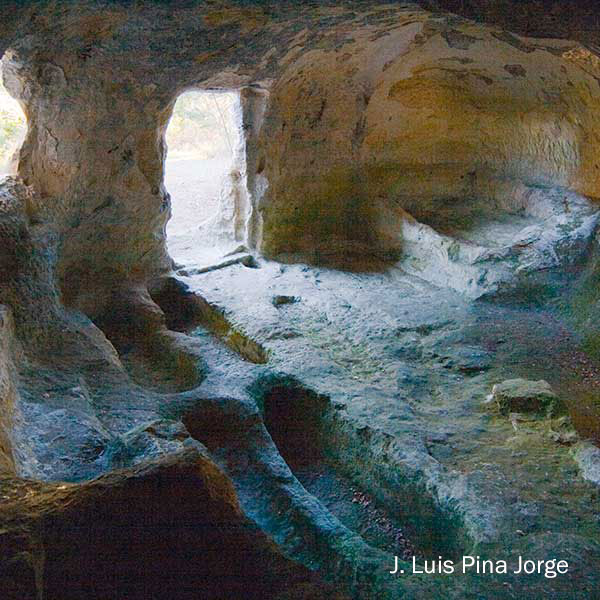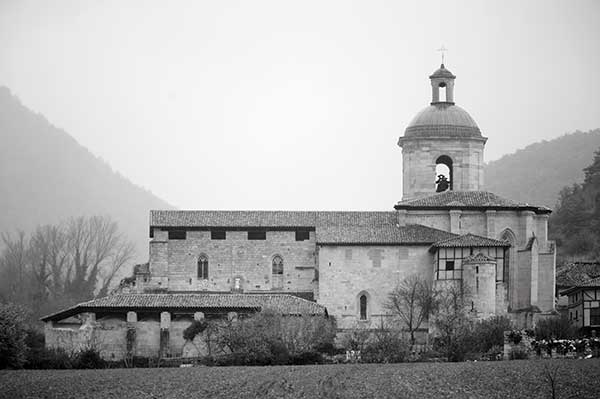The Visigoths also left traces of their time in the Valdegovía Valley in the form of their defence and look-out systems.
It seems that during the dark times of the Middle Ages several of the tribes that invaded the Peninsula passed through these lands, in some cases devastating them and in others subjecting and living with their inhabitants. In the latter case, they generally made use of the existing settlements. The Iron Age settlement of Lastra at Caranca, for example, was used by various different civilizations, the latest being from this period.
Valdegovía has many souvenirs of these eventful times, particularly in the shape of hermits’ caves, churches and hermitages as well as towers and forts of a military nature.

The period from the V to the VIII centuries saw a growth in the number of hermits, an ascetic way of life which was condemned by both the church and Spanish-Roman authorities.
These hermits sought Christian perfection through withdrawing from society and living in solitude in places that were out of the way and often very difficult to enter. Such ascetics would live in dwellings that they themselves dug out of the rock. There are examples of these caves at Bachicabo, Barrio and Quejo, though the most important are to be found at Pinedo, Corro and Tobillas.
There was a series of circumstances in the VIII century, chief among which was the start of the invasion by the Arabs in 714, beginning in the south and rapidly spreading northwards.
Some castles such as the one at Astúlez were built to resist the Moorish invasion and date back to this period, as do other sites like Berbeia (Barrio) which were erected as look-out posts.
Added to this was the fact that between the VIII and X centuries there was a spontaneous occupation which was not the result of population growth among the inhabitants of the region, but rather a real colonization of land space. It would seem that most of these people came from León and Asturias).
The model of occupation for this district consisted of founding or building churches and monasteries, and working the surrounding land for subsequent cultivation.
In the late Middle Ages, the new language of Castilian began to be heard (Valpuesta cartularies), and land space was colonized by ecclesiastics from the early IX century. The church and its spiritualizing work contributed to the settlement and repopulation of this part of the province of Alava.
One consequence of this was the monastery of San Román de Tobillas dating back to 822, from which the labour of colonization pushed out towards Villanueva and Valderejo.

Valdegovía is an area in which agriculture continues to play a predominant role, with people living and working their own native land, and for this reason the district has never become densely populated.
In Valdegovía there have been successive struggles by different lineages to keep power. In the late XI century it came under the control of the Lord of Vizcaya and remained so until 1479, when it passed to the king of Castile.
In 1463, the Confederations of Valdegovía and Valderejo were incorporated into the Confederations of Alava. From then until the present day, they have been included in the group of district councils known as the Cuadrilla de Añana, and as a result the Confederation of Valdegovía has followed the ups and downs of the other districts and zones of Alava.
